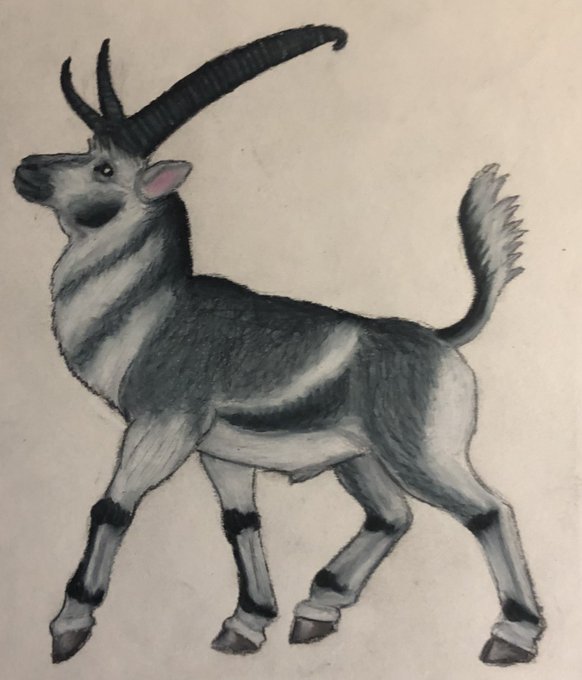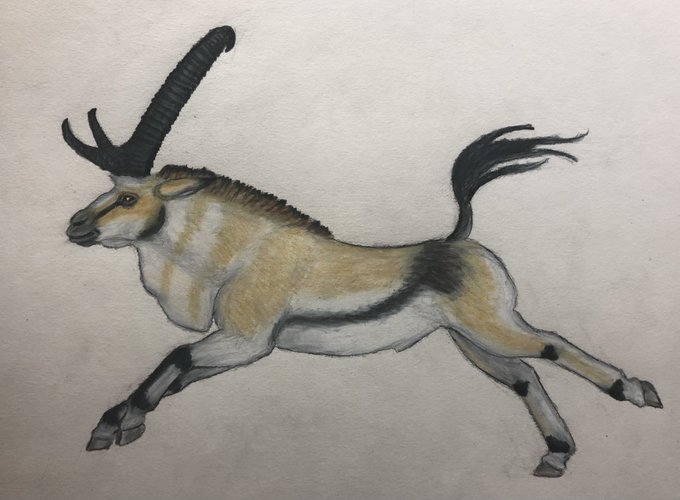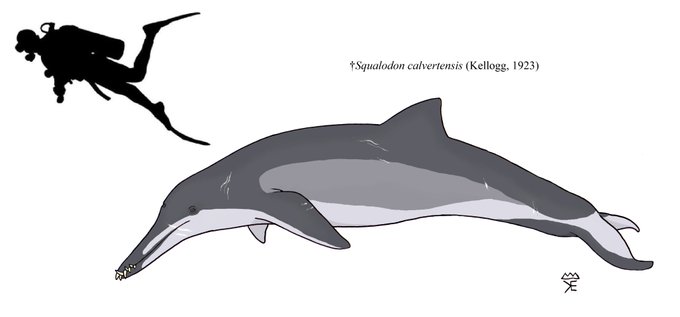Miocene.のTwitterイラスト検索結果。 14 件
Species: Livyatan melvillei, a large macroraptorial sperm whale from Miocene. It lived at the same era as O.megalodon, and likely occupied the similar position as apex predators.
Borissiakia huangheensis (Qiu et al., 1998), a medium-sized Schizothere from Asia of Early Miocene.
Pronghorns came to Kaimere in two waves: middle and late Miocene. The first wave has the most diversity in the known world (forest and prairie taxa), but the clade of the second that includes the modern common pronghorn is much more diverse on the Eastern continent.
South American Pacific coast during the Late Miocene. A large Otodus megalodon approaches a pod of Odobenocetops leptodon, a tusked cetacean, and a group of the large penguin Spheniscus urbinai
A pair of Paleoart reconstructions: Telmasaurus and Squalodon.
Telmasaurus was a medium sized basal Varanoid (a stem-Monitor lizard if you will) from the Late Cretaceous Flaming Cliffs of Mongolia. Squalodon is a macropredatory Platanistoid whale from the Oligocene and Miocene.
Painted a macroraptorial sperm whale mother (Zygophyseter varolai) swimming peacefully along a seagrass bed as her calf takes a nap on top of her sometime during the late Miocene.
#FossilFriday
Phylogenetic analysis & #osteological comparison of the #cavefish Bibarba parvoculus & its surface congener B. bibarba corroborate their specific differentiation & estimate the species split in the #EarlyMiocene.
Part of the April issue: https://t.co/IAk5xAjXhG
The bathornids were lesser-known relatives of the famous South American terror birds that inhabited North America from the Eocene to the Miocene. Here's the largest species, Paracrax gigantea.
Phoberomys was a gigantic rodent & the second largest rodent that ever lived. It roamed Argentina during the Miocene.
(Credit: Prehistoric Wildlife)
The bathornids were lesser-known relatives of the famous South American terror birds that inhabited North America from the Eocene to the Miocene. Here's the largest species, Paracrax gigantea.
Check out those ossicones! 👀 Probilytherium is a prehistoric relative of giraffes and okapis from the Miocene. Its large, butterfly-shaped “antlers” are actually ossicones, made out of ossified cartilage instead of bone. #FactFriday
New article in @PLOSONE . A team from ICP and @MNCNcomunica describes a new giraffid from the late Miocene. https://t.co/rJZvQuJnQM cc:
Reconstruction of the North American #chalicothere #Moropus elatus, a browsing herbivore from the early #Miocene. https://t.co/BOMMBGhFQ4
#FossilFriday Cranium of Albanosmilus jourdani, a 'false' sabre-toothed cat, Miocene. http://t.co/UmYpviwb2F































